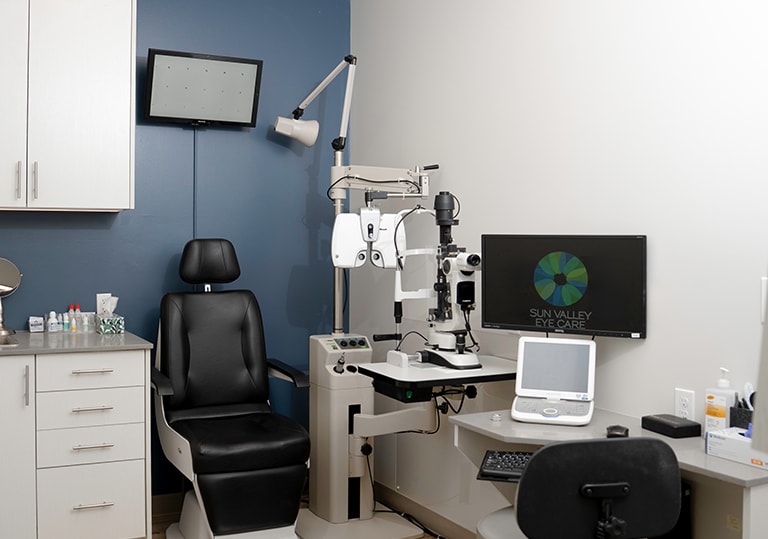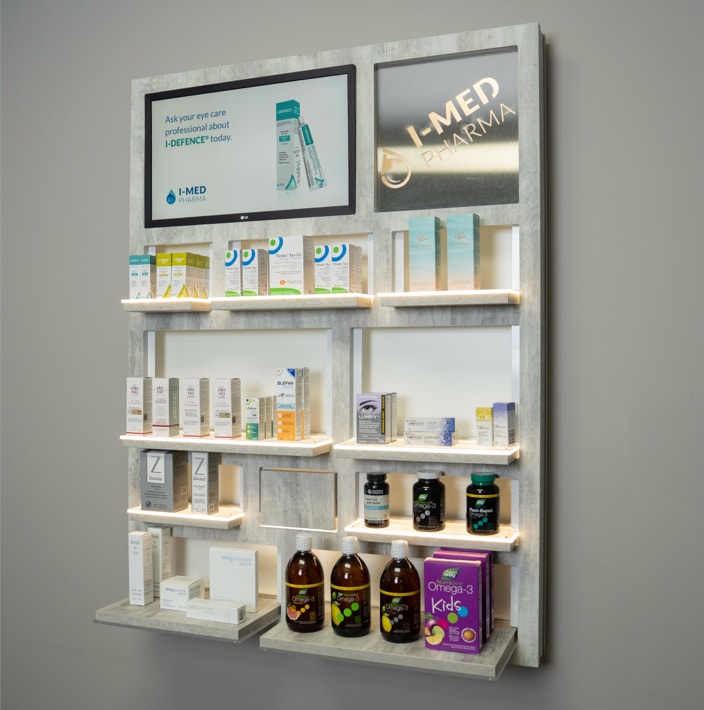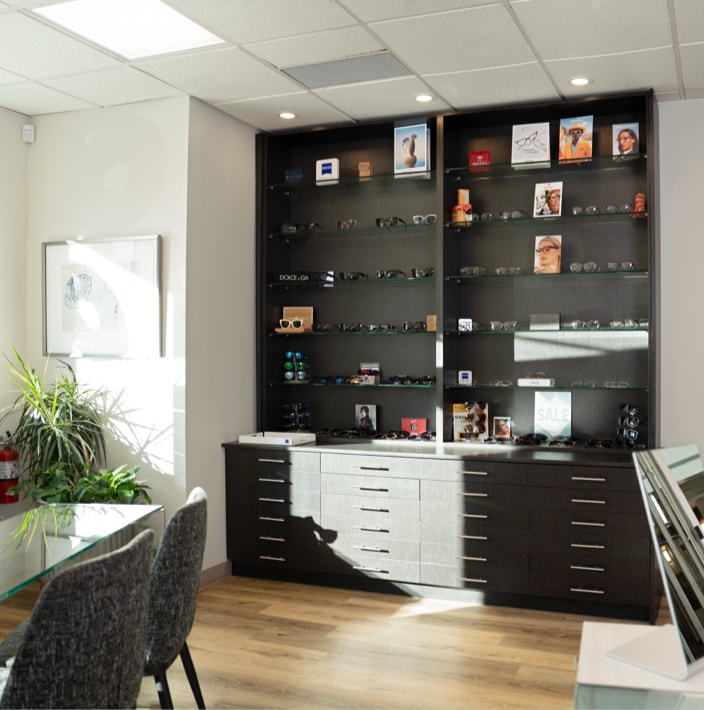Detecting Eye Diseases Early
Many eye diseases develop gradually and without noticeable symptoms, making them difficult to detect without a professional exam. A comprehensive eye exam is the most effective way to identify early signs of eye disease and protect your vision. Early detection allows for timely treatment and better outcomes to preserve your long-term eye health.
At Sun Valley Eye Care, our knowledgeable optometrists complete a thorough analysis of your eye health during each eye exam. If we detect signs of eye disease, we’ll be with you every step of the way to manage and treat your condition.
Don’t wait for your vision to be impacted. Book your eye exam today.
Book Appointment
Our Diagnostic Technology
We use key diagnostic technologies such as OCT scans, visual field testing, and retinal imaging to monitor your eye health.
These devices allow us to catch microscopic changes in your eyes that may indicate eye conditions before you notice any impact on your vision.
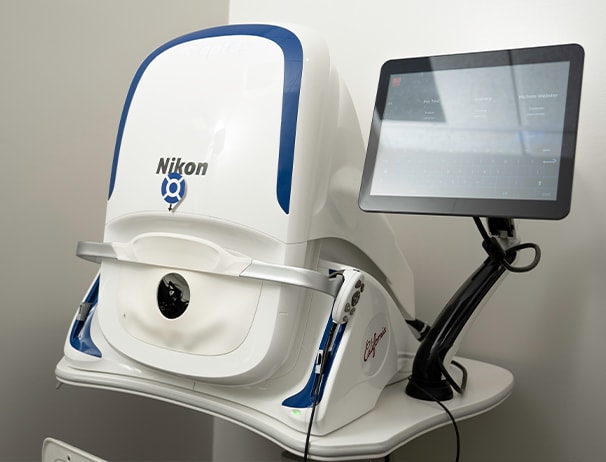
Eye Diseases We Monitor and Manage
We monitor and manage a wide range of eye conditions, including age-related macular degeneration (AMD), keratoconus, diabetic eye disease, dry eye syndrome, conjunctivitis, cataracts, and flashes or floaters. Regular eye exams are essential for early detection and effective treatment, helping protect your vision and maintain long-term eye health.
Age-related macular degeneration (AMD) is an eye condition that causes the breakdown of the macula, which is the part of the retina responsible for your central and colour vision. Damage to the macula can lead to central vision loss.
AMD has 2 types. The most common is dry AMD, which accounts for 90% of all cases and develops slowly over time. Dry AMD can be treated with MacuMira technology. Wet AMD is less common and occurs when weak blood vessels leak or bleed under the macula, causing a rapid onset of symptoms.
Keratoconus is an eye condition that causes your cornea, the clear, dome-shaped part of the eye in front of the iris, to thin and bulge into a cone shape. It can cause symptoms such as blurry or double vision, light sensitivity, and an increase in your nearsightedness or astigmatism.
Usually, keratoconus stabilizes after a few years without causing severe vision issues. However, we will monitor your condition every step of the way to help you maintain your eyesight and find comfortable and effective methods of vision correction.
Diabetic eye disease is a complication of diabetes. While diabetes increases your risk of various eye conditions, such as cataracts, glaucoma, and retinal detachment, it also increases your risk of diabetic retinopathy and diabetic macular edema.
Diabetic eye disease is one of the leading causes of blindness in Canada. If you’re living with diabetes, your line of defence against diabetic eye disease should be a combined effort between managing your blood sugar levels and overall health, usually guided by your general practitioner, and routinely monitoring your eyes for any signs of impact with your optometrist.
Dry eye syndrome, also known as ocular surface disease, occurs when your eyes cannot produce sufficient tears or produce tears without the proper composition.
Dry eye syndrome typically causes symptoms such as gritty, scratchy, red, or irritated eyes. In some cases, people experience excessive eye watering as the body attempts to overcompensate for the dry feeling.
We provide dry eye treatments that focus on determining the root cause of your symptoms and targeting that cause through a personalized treatment plan.
Commonly known as pink eye, conjunctivitis is the inflammation of the conjunctiva, a thin, transparent layer that covers the inner eyelid and surface of the eye. It can cause red or bloodshot eyes, and often occurs with sticky or watery discharge, swelling, and itching.
Conjunctivitis can be caused by several different factors. It can be infectious, caused by a bacterial or viral infection, which can be passed on from person to person, or it can be caused by allergies or chemical exposure.
If you are dealing with symptoms of conjunctivitis, it’s important to get a proper diagnosis. We can diagnose and treat your conjunctivitis in our clinic.
Floaters are common, semi-transparent cobwebs, specks, or squiggles that appear in your vision. They’re caused by tiny particles within the gel-like substance inside your eye, which become noticeable when they drift across your line of sight. Sometimes, they can occur with flashes of light.
While most floaters are normal and not a cause for concern, a sudden increase in floaters can indicate a more serious problem. If you notice a significant change in your vision, whether floaters, flashes, or something else, it’s always a good idea to come in for an eye exam.
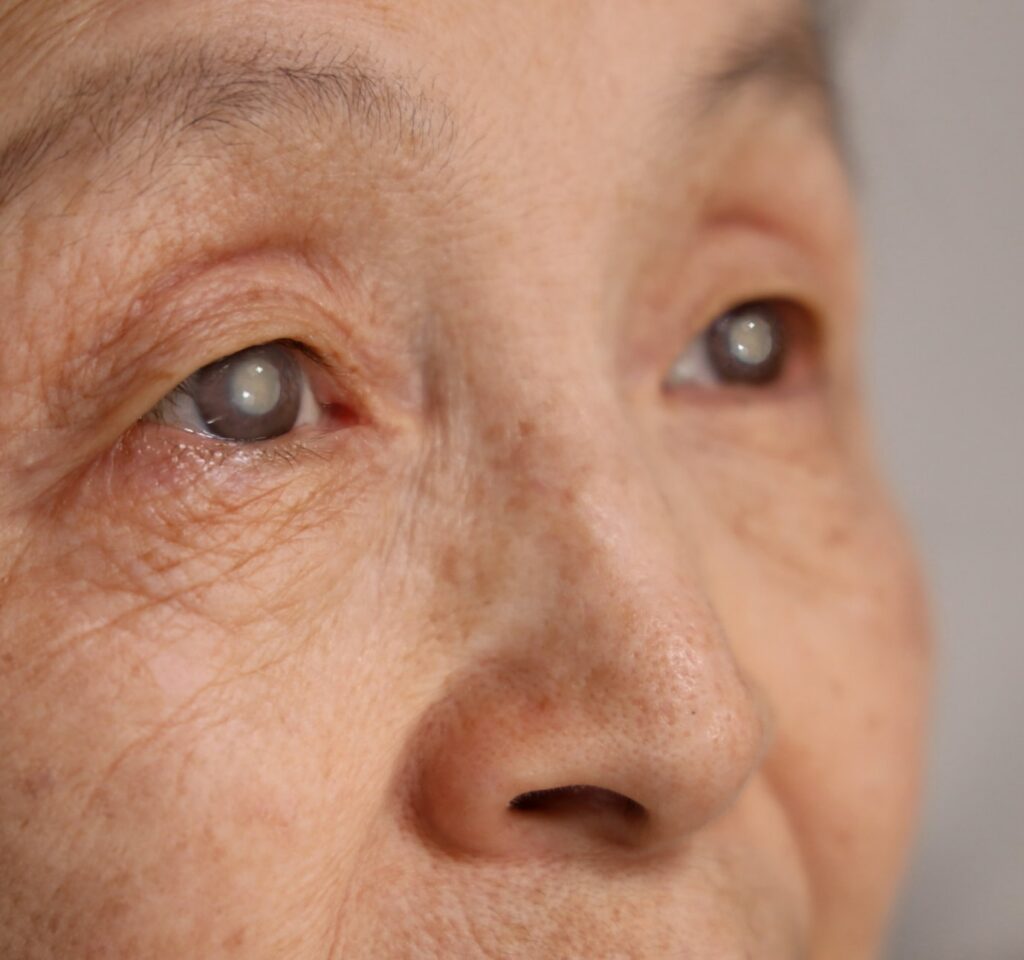
Cataract Exams and Management
Cataracts are a common eye condition that occurs most often in people over 60. As we age, the clear lens of our eyes can thicken and become opaque, obscuring our vision. This is called a cataract.
Family history and other health conditions can make cataracts more likely or occur at a younger age. However, many other causes, such as UV damage, eye trauma, certain medications, surgeries, and radiation treatments, can also increase your risk of developing cataracts.
If you have been diagnosed with cataracts, we can help you maintain your vision through corrective lenses (glasses or contact lenses) as long as we can. When your vision becomes significantly impacted, we’ll refer you to a cataract surgeon and assist you by co-managing the surgery and recovery process.
Glaucoma Management
Glaucoma is a group of eye diseases that cause damage to the optic nerve, which transmits visual information from your eyes to your brain. This damage is usually caused by high pressure inside your eye.
There are several types of glaucoma, including:
- Open-angle glaucoma, which is caused by a blockage in the eye’s drainage channels.
- Angle-closure glaucoma, which occurs when the space between your iris and cornea narrows. It is an eye emergency that requires immediate attention.
- Secondary glaucoma, which occurs when an injury, infection, or eye trauma causes a buildup of fluid in the eye.
We can help you manage your glaucoma. For open-angle glaucoma, we can prescribe special eye drops or oral medications that help to reduce your eye pressure. We will monitor your condition closely and recommend further treatments, such as surgery, to manage your glaucoma if necessary.

Protect Your Vision Today
A family history of eye disease or a diagnosis can feel overwhelming. We’re here to help you navigate every aspect of your eye health to preserve your vision for the future. We’re also happy to answer any questions you have and bring clarity to your situation.
Don’t wait until your vision is impacted. Stay proactive and let us monitor your eye health through regular comprehensive eye exams.
Book Appointment
Why Sun Valley Eye Care?
Health-Focused Care
Your eye health is our focus. We offer extensive diagnostic imaging, eye alignment checks, and vision tests to make sure your eyes are healthy and functioning well together to prevent headaches, eye strain, or other discomfort.
Patient Education
We want you to understand your health and eye care options so you can make informed decisions. Our optometrists take time to walk you through any important information and answer all your questions.
Genuine Connection
Our team wants to get to know you and your family. We’re genuinely excited to catch up with you during your appointment and get a better understanding of your life and your needs. We believe this connection lets us serve you better.
Visit Our Location
Finding Our Office
We’re on the main floor of the Sunpark Plaza building beside South Calgary Medical Clinic.
Where to Park?
Validated, accessible parking is available right outside.
Our Address
- 105-40 Sunpark Plaza SE
- Calgary, AB T2X 3X7
Contact Information
- Phone: 403-452-3443
- Email: vision@sunvalleyeyecare.ca
Hours of Operation
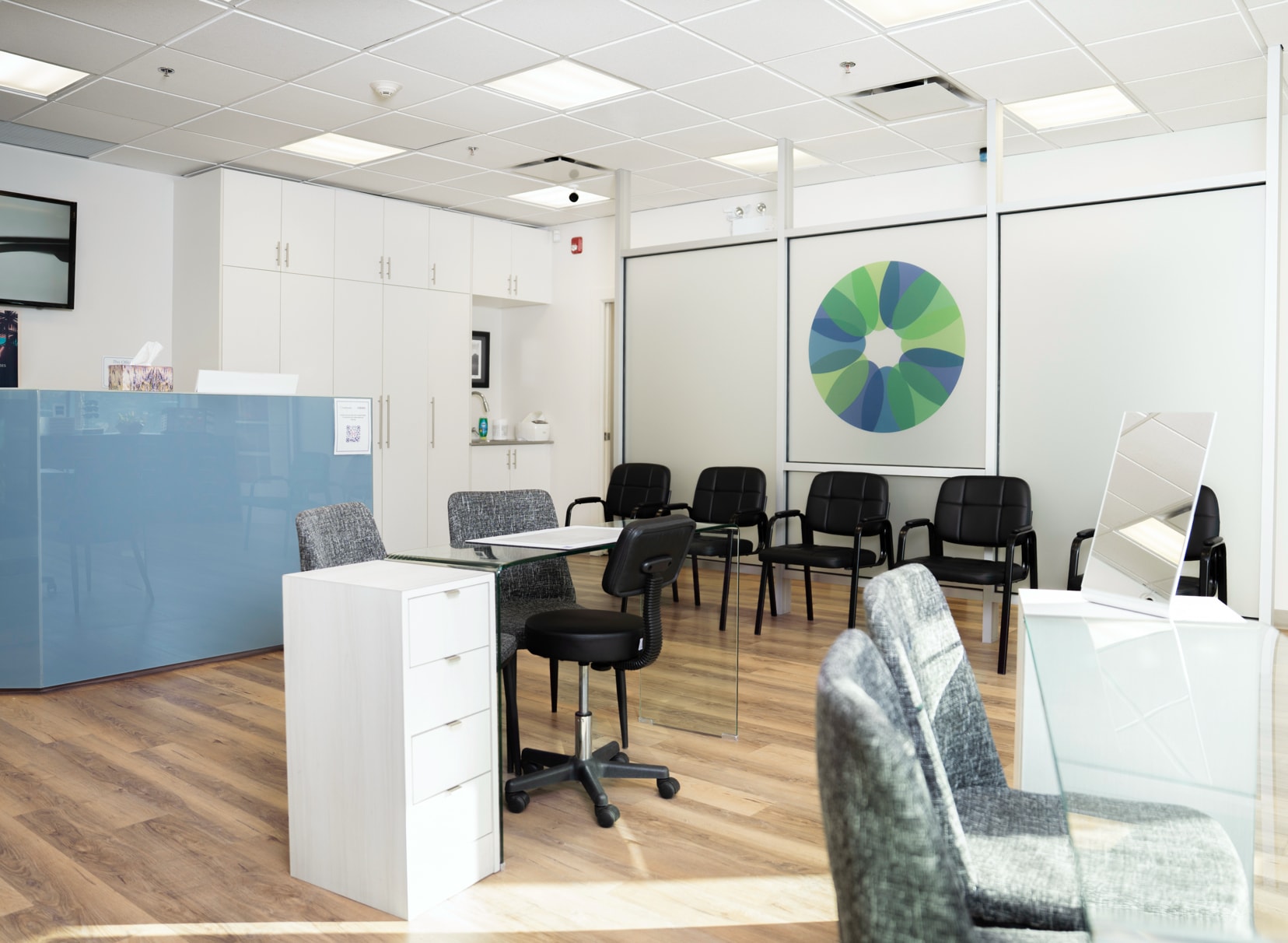
Polished Style, Precise Vision



